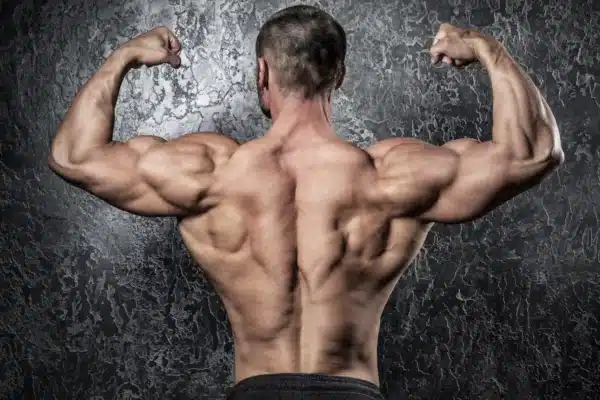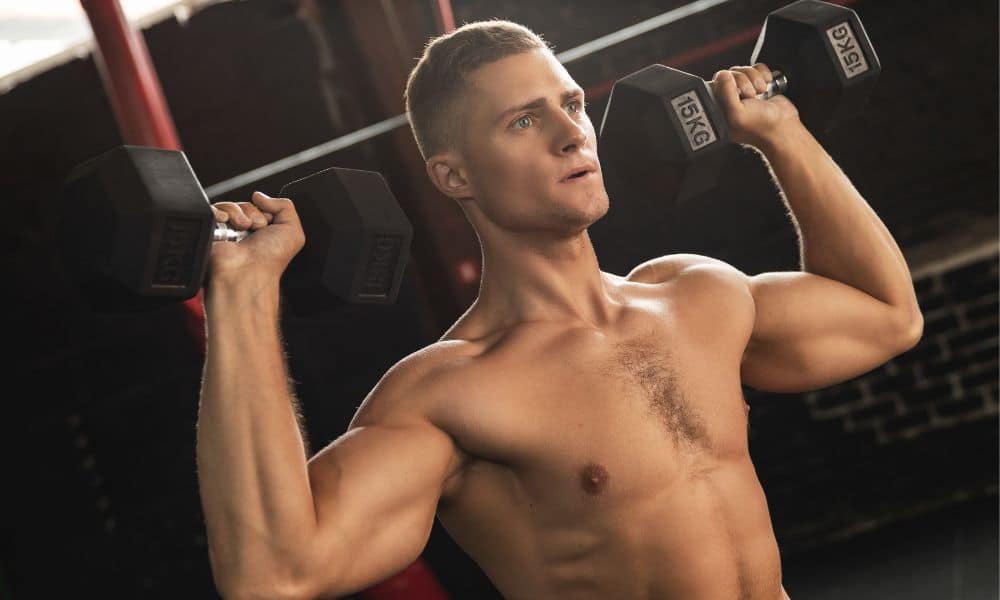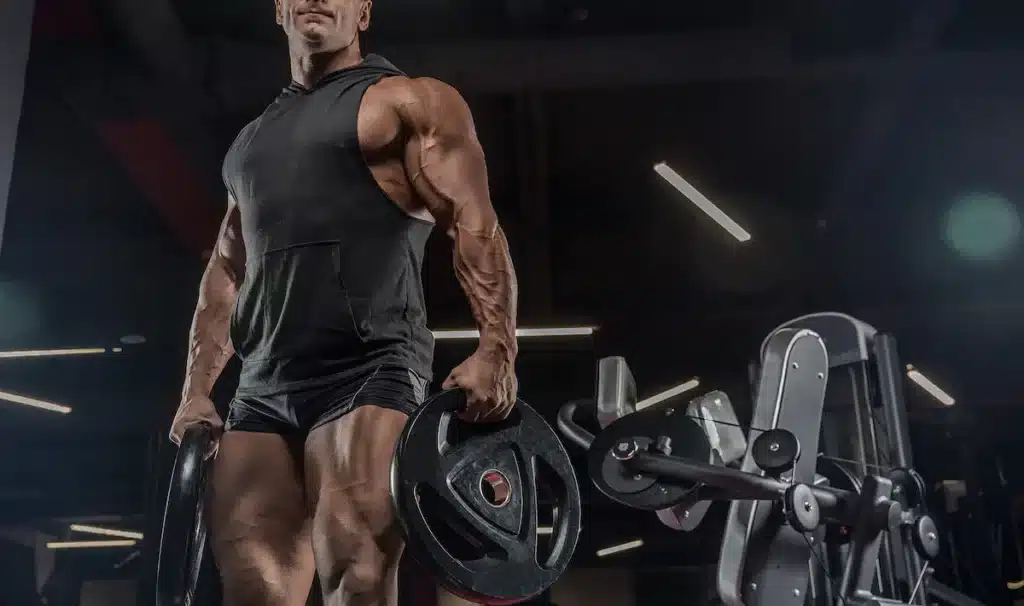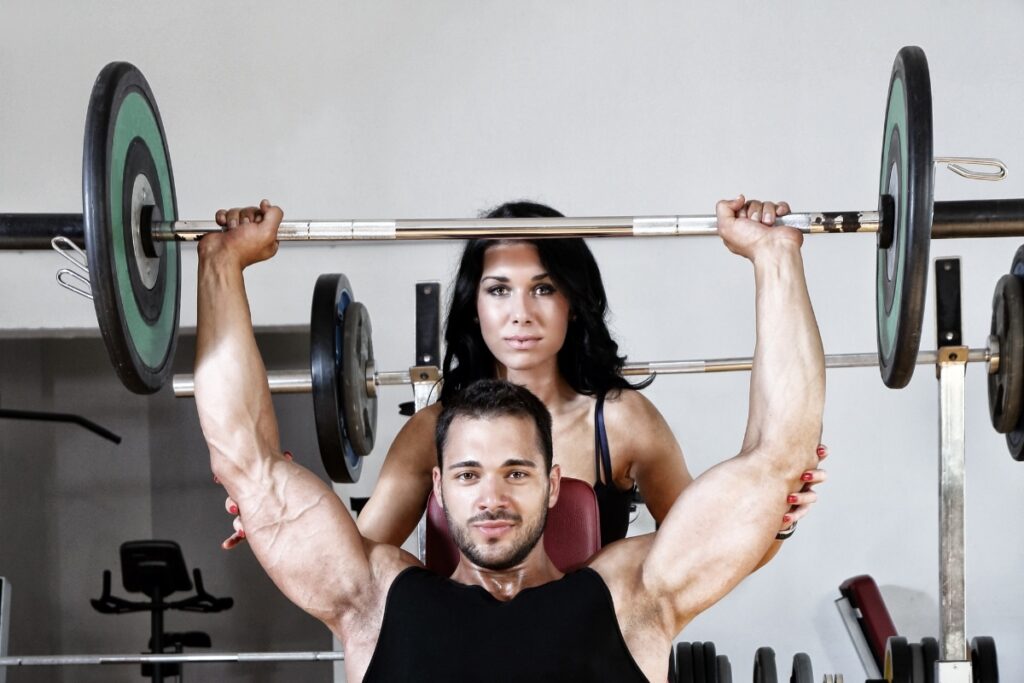The proper workout builds big shoulders that make your body look sexy. Did you know you can make your shoulders five times larger than the average person? You can use the correct exercises to build muscular shoulders.
We associate broad shoulders with power and leadership. So what is the most effective shoulder workout to build big powerful shoulders?
This article provides five exercises you need to try to take your physique to the next level.

People see your shoulders first when they see you. Your shoulders tell a story about you that many believe. Consequently, people look at your shoulders and see weakness or strength.
Three smaller muscles make up the shoulders and give them a unique range of motion. Can you name one other muscle that can move in all directions? Subsequently, the shoulder’s versatility and flexibility make it one of the most critical muscles in the body.
A good workout provides your body with extra energy and power. However, if you feel weak after your workout, then change your activity.
For example, let’s look at an exercise that builds big powerful shoulders. Also, it will give you the energy and power you need to impress.
You can build big, powerful shoulders with the proper workout, technique, and progressive overload.
➢ Correct your posture and improve how your shoulders look. The spine provides support to the whole body. When you correct the spine, then the muscles follow. Finally, your body responds well to good posture with positive energy, increased hormones, and razor-sharp mental focus.
➢ Add back and chest exercises to your workout to get the best and most effective results. Back and chest exercises naturally work the shoulders. In addition, all muscles respond better to natural lifts because they require the muscles to work together.
➢ To build shoulders successfully, avoid injury as much as possible. You can easily injure your shoulders when you don’t know what to do. Consequently, forcing the shoulders to take on too much weight at the wrong angle leads to injuries. To reduce the risk of injury, learn the angles that place the most stress on the shoulders.
➢ Know your one-rep max for each of your lifts. Also, use your one-rep maximum to determine the weight, sets, and reps for each lift. Next, choose the correct form and technique over volume. Finally, listen to your body. Only it can tell you what you can do.
Use dumbbells and barbells to perform single and compound joint exercises to tone and build muscles in the shoulder.
Learn the three muscle groups of the shoulder and what they do. The shoulder uses the anterior, medial, and posterior deltoids and the rotator cuff to perform rigorous exercises. The shoulder can move front, back, side to side, and around because of these muscles and the rotator cuff.
These muscles make the shoulder the most complex muscle group in the body.
Unfortunately, the versatility of the shoulder causes many people to become overconfident in the muscle. Overconfidence in a muscle leads to the misuse of the muscle and injuries.
Focus on posture, technique, and progressive overload for the best results. Without further delay, let’s examine the exercises that build the shoulders.
The barbell push-press targets and build the shoulders (deltoids).
Subsequently, It builds overhead strength and stability for a muscular look.
Use your arms, chest, and back to activate your shoulders. Muscles that connect help each other to perform a lift. Choose the right amount of weight to prevent injuries and engages the muscles you want to workout.
Lift with a light weight to learn the range of motion and technique before getting serious about the lift. Once you know what to do, discover your one-rep max before setting your volume.
Finally, use your one-rep maximum to determine your volume, sets, and reps.
Sets:
➢ Attempt three sets of 10 reps initially at 75% of one-rep max.
➢ Then, increase it to 5 sets of 10 reps at 75% of one-rep max once your body adapts.
Step-By-Step Execution:
➢ To attempt this exercise correctly, balance the weight on your shoulders and spread your feet shoulder-width apart.
➢ Next, hold the barbell shoulder-width apart and place your palm in the forward direction. Bend your knees slightly to support the lift.
➢ Next, hold the barbell above your head for 2-3 seconds. Lower it down slowly and gradually to shoulder length.
➢ Repeat the process until you complete the set. Take a break for 60 seconds in between the sets.
The lateral raise isolates and builds your posterior deltoid.
Also, targeting the rear deltoid helps strengthen, tone, and stabilize your shoulders and upper body.
There is no need to lift heavy weights for lateral raises to get results. The lateral raise isolates the rear deltoid and does not allow for support by other muscles. This muscle needs the help of other muscles to lift heavy.
You can see positive results if you use the correct technique in a few weeks. You can also perform this exercise with cables to learn the proper concentric, eccentric, and isometric motions during the lift.
Sets:
➢ Attempt three sets of 10 reps initially at 75% of one-rep max.
➢ Then, increase it to 5 sets of 8 reps at 80% of one-rep max once you adapt to the lift.
Step-By-Step Execution:
➢ Hold the dumbbells in your hand and make a 45-degree angle. Palms must be facing your body and keep your upper body firm.
➢ Next, elevate your arms to shoulder height and hold them for 3 seconds maximum. Lower down the dumbbells and repeat the whole process. Keep a little bend in your elbows to manage your balance.
➢ You can also attempt this exercise with bench support or standing straight. It gives you control of the lower back and activates arm muscles.
The reverse fly works and builds the trapezoid and rhomboid muscles in the upper back and shoulder region.
Consequently, strong upper back muscles help balance the shoulder strength and help protect the shoulder from injury. In addition, the reverse fly, a tricky exercise, improves your posture and shoulder strength. Use the reverse fly to build powerful massive shoulders with the correct technique and adjustments.
You can also perform this lift by laying face down on a bench or with cables. Again, focus on your technique and posture to get the best results. Don’t forget your one-rep max determines the weight, sets, and reps.
Sets:
➢ Attempt three sets of 10 reps at 75% of one-rep max to adjust the body and improve posture.
➢ Increase it to 5 sets of 8 reps at 80% of one-rep max and keep holding the lightweights.
Step-By-Step Execution:
➢ Stand and bend over, lay on a bench face down, or use the pec deck machine. Also, hold the dumbbells in your palms, facing your body.
➢ Keep your body straight and lift the weight to shoulder length. Hold the weight for about 3 seconds and then lower it down.
➢ Focus on each lift’s concentric, eccentric, and isometric portions. Concentrate on your posture and technique. Use as much mental energy as physical energy to perform the lift correctly.
Use the face-pull to target the deltoids, rhomboids, and trapezius, which allows you to pinch the shoulder blades together.
The face pull provides strength and firmness to the shoulders. Use face-pull lifts to balance the work done with the pec deck machine or cable flies. Also, remember to categorize lifts as a pull or push exercise.
Consequently, you must perform as many “pull and push” exercises to promote balance and fitness. The face pull provides constant pressure on the shoulders, which activates more shoulder growth.
Sets:
➢ Attempt three sets of 10 reps initially at 75% of one-rep max.
➢ Then, increase it to 5 sets of 10 reps at 80% of one rep once your body adapts.
Step-By-Step Execution:
➢ According to your height, adjust the rope on a cable weight machine. Place the angle of the string at your face length.
➢ Hold the bar firmly in your hands and take a few steps back to increase the cable’s tension. Subsequently, start stretching the cord so that it is parallel to the shoulders.
➢ This exercise involves the upper body. While pulling the cable, keep your arms at one angle. Next, tense the shoulders before releasing the line. Finally, bend the elbows to make sure your muscles deliver the power.
The machine press targets and builds big shoulders with more focus while preventing weaker muscles from getting in the way.
The machine press targets the back muscles and shoulders and provides rapid results to the user. Also, it creates massive stretching and soreness in the upper body for muscle activation behind the neck.
Consequently, the machine press allows the upper body to handle heavyweight to build massive shoulders.
Sets:
➢ Attempt three sets of 10 reps at 75% of one-rep max.
➢ After mastering the technique, increase it to 5 sets of 8 reps at 80% of one-rep max.
Step-By-Step Execution:
➢ Straddle the bench and place your feet firmly on the ground. Also, keep your posture straight to handle the weight correctly with your shoulders.
➢ Lift the bar from the stand. Hold it in your palms, facing away from your body. Push the weight upward on a vertical line. Once extended above your head, keep it still for about 3 seconds.
➢ The bend between the elbows must be slight to support the weight. Next, lower the bar to your shoulders. Repeat the process. Don’t forget to concentrate on posture and technique during each lift. Your mental energy must equal your physical energy to get the best results.
Use consistency, technique, and progressive overload to build big massive shoulders.
If you get it right, your body will tell you with pain, sweat, and fatigue.
After performing the workout mentioned above, you can reach your desired goals in a few weeks. Consequently, there is no chance to build big, massive, muscular shoulders without paying attention to the technique.
The shoulders can extend in all directions, making them vulnerable to misuse and injuries. You must apply as much mental and physical energy when working the shoulders to prevent damage and build muscle. Use multiple lifts that extend in different directions to develop the three heads of the shoulders.
Challenge your shoulders and commit to your workout sessions consistently. When attempting any workout for the first time, take it slowly and gradually increase the training.
Trust the science but listen to your body. Be the best you can be, and don’t worry about others. Stay with it and use progressive overload to reach your next level. If you or someone you know is considering bodybuilding, share this article on Facebook or Twitter so that others can learn more about building muscle.




